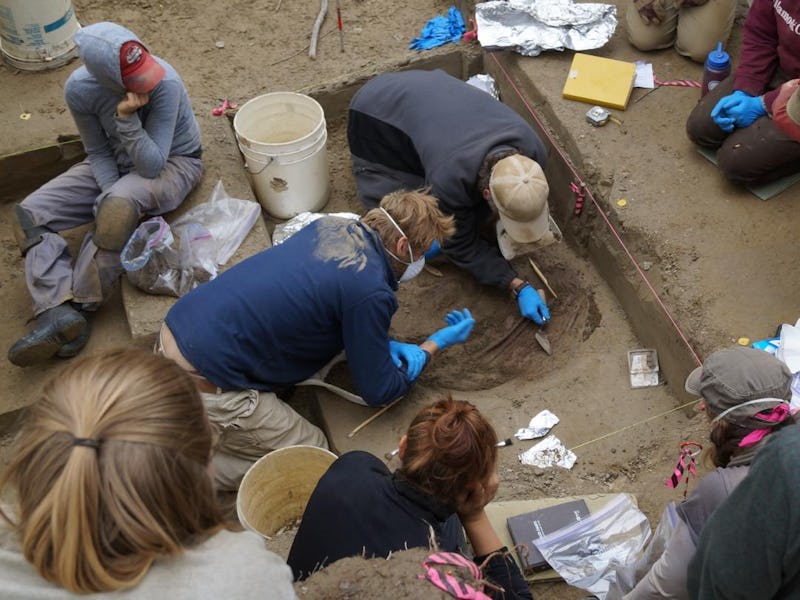Ice Age Baby Skeleton Rewrites History of the First Native Americans
Introducing the Ancient Beringians, a previously unrecognized population.

In 2013, the remains of two ice age infants were found in the Upward Sun River archaeological site in central Alaska. Found in the same 11,500-year old grave, the two babies remain the oldest evidence of human remains ever found in North America. In a new Nature study, scientists sequenced the full genome of one of the infants — a girl named by the present-day local Native community as Xachi’tee’aanenh t’eede gay, or the “Sunrise Child-Girl” — and reveal her history-changing past.
Her genome revealed that she belonged to a previously unrecognized and distinct Native American population, which the study authors call the Ancient Beringians. In a paper released Wednesday, scientists from the Universities of Cambridge and Copenhagen explain that her genes are evidence that the Ancient Beringians came first: They were the initial offshoot of the ancestral population that led to the other Northern and Southern Native American groups historians already know about.
According to the team behind this study, North America was first settled by this shared, founding population, which then gradually split into the different sub-groups.
“Ancient Beringians and all other Native Americans derive from the same source population,” co-author José Victor Moreno Mayar, Ph.D., of the University of Copenhagen told Inverse by email. “One could think of Ancient Beringians as a third branch of Native Americans, the other two being North and South Native Americans.”
The location of the Upward Sun River site in Alaska.
This finding helps clarify when the two separate branches of Northern and Southern Native Americans split from each other. Previously, scientists debated whether that divide happened after people migrated from Asia to Alaska, or whether genomically different groups from Asia made the cross-continental journey separately. Comparing the genome of the Sunrise Child-girl to the genomes of present-day Native American populations, the scientists found that the Ancient Beringians became isolated from the common ancestral population 20,000 years ago.
That time period comes before the split that led to the Northern and Southern groups, which occurred between 17,000 and 14,000 years ago. This suggests that there was likely just one wave of migration into the Americas.
Excavations at the Upward Sun River archaeological site in Alaska.
Archaeological evidence supports the idea that humans lived in the Americas south of the continental ice sheets as early as 14,600 years ago, but the overall timeline of how and when the peopling of the Americas occurred has been clouded with discrepancies.
“Before learning about Ancient Beringians, we only knew about the North and South Native American branches,” Mayar says. “Although it appeared that these diverged from each other in the Americas, the fact that Ancient Beringians are an early Native American offshoot found in Alaska directly confirms this result.”
This new study indicates that the founding population of Native Americans diverged from the ancestral Asian group in northeast Asia 36,000 years ago during the Late Pleistocene era and migrated via the Beringia land bridge connecting northeast Asia to northwestern North America. In that region, harsh weather and glacial barriers kept some of the populations — like the Ancient Beringians — in one place for extended periods of time. The scientists behind this study believe that the split between the North and South Native Americans only happened after some of their ancestors were able to pass through the thawing, giant glaciers that covered Canada and parts of the northern United States.
“The Ancient Beringians diversified from other Native Americans before any ancient or living Native American populations sequenced to date,” study co-author Eske Willerslev, Ph.D., an evolutionary geneticist at both the Universities of Cambridge and Copenhagen, said in a statement released Wednesday.
“It’s basically a relict population of an ancestral group which was common to all Native Americans, so the sequenced genetic data gave us enormous potential in terms of answering questions relating to the early peopling of the Americas.”